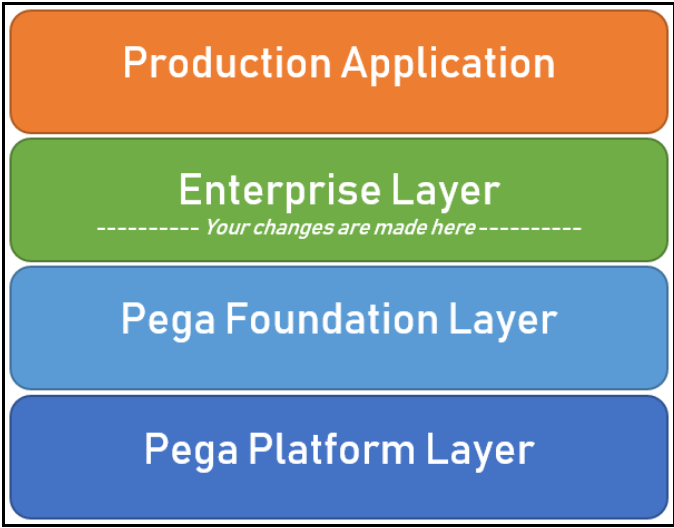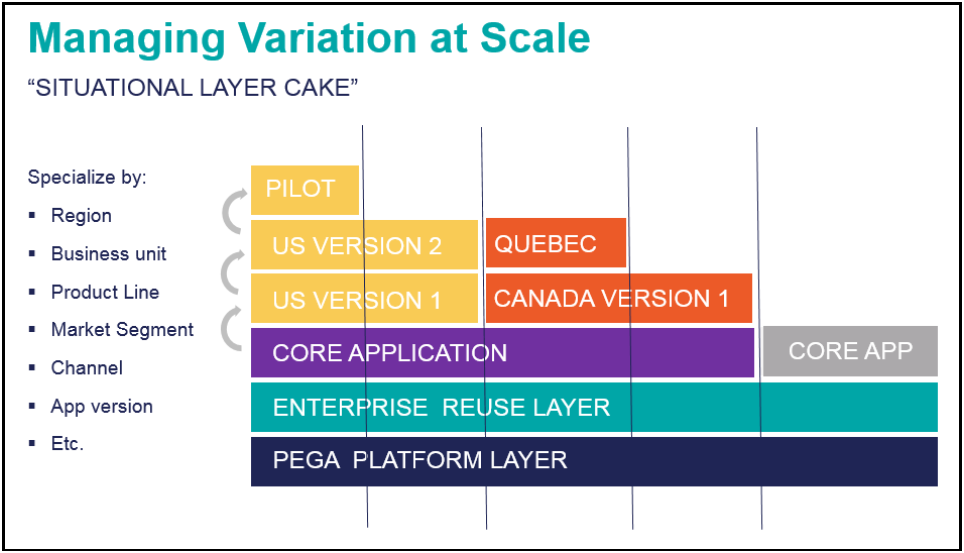
Specialization design considerations
Specialization design considerations
When deciding on the application layers to be developed, consider the business requirements for specialization. Selecting a design that introduces more specialization layers than are required can be complex. This complexity increases the time, resources, and effort required to produce a Minimum Lovable Product (MLP).
Specialization considerations
Always follow object-oriented principles to ensure rules are extensible. For example, use parameterization and dynamic class referencing (DCR) to support specialization in the future.
When considering specialization, be aware of the following things:
- A specialization layer need not be specific to one type of application. Instead, a specialization layer can support multiple applications across an enterprise.
- Circumstancing, pattern-inheritance, and data modeling techniques may eliminate the need to define a specialization layer for an application.
- A specialization layer can be composed of multiple built-on applications.
Single implementation application
Most development efforts can achieve the MLP by developing a single production application either directly on the Pega Platform or by leveraging one or more of Pega's Horizontal or Industry foundation applications.
A single application is the best approach in the following scenarios:
- The enterprise does not span multiple regions where business rules vary dramatically.
- The enterprise is only interested in completing the implementation of a framework developed by a vendor. The enterprise does not need or want to extend its own application.
- The enterprise has divisions that develop division-unique applications.
Specialization layer with multiple implementations
In special cases, the development effort may require a specialization layer (this could be a framework application) on which one or more production applications ( a special type of implementation application) are built.
This diagram shows specialization of an application across different regions in North America. The procedures and policies specific to a region are layered on top. Every time the system interacts with a user or advances a case, it selects the policy and procedure that is most specific to the situation at hand. This means that only those policies and procedures that are specific to French-speaking Quebec, for example, need to be defined in that layer. For all other regional policies and procedures, the more generic layers beneath are consulted in order.
A specialization layer on which one or more production applications are built makes sense in the following scenarios:
- The enterprise spans multiple regions where business rules vary dramatically and most of the core functionality will be reused across the enterprise.
- The enterprise wants to target distinct customer types while leveraging a core application. Business rules vary dramatically between customer types.
Note: A framework layer "Is A" specialization layer. “Framework” has a specific meaning. “Framework” means an application that spans every case type. “Framework” represents an entire layer. A “Framework” is a special type of specialization layer.
Note: A Production application "Is An" “Implementation” application. A Production application is a more specific type of an “Implementation” application. A Production application is what end users use. It is what you send down a CI/CD pipeline all the way to a production environment.
If you are having problems with your training, please review the Pega Academy Support FAQs.
Want to help us improve this content?

